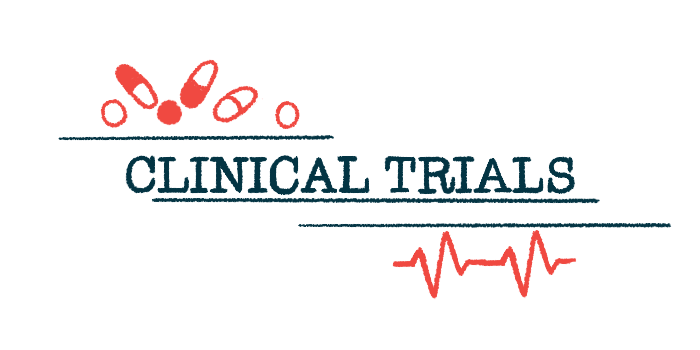High dose of SMA treatment Spinraza shows benefits: Trial data
An experimental high-dose regimen of spinal muscular atrophy (SMA) treatment Spinraza (nusinersen) is showing motor benefits for previously untreated patients of all ages, as well as those who switched over from Spinraza’s approved dose, according to new data from the DEVOTE clinical trial.
Among babies who’d never received SMA treatments (treatment-naïve), the high-dose therapy was also associated with a reduced risk of death, hospitalization, and serious respiratory outcomes, as well as reductions in a biomarker of nerve damage.
The findings were scheduled to be presented by developer Biogen at the World Muscle Society Congress, taking place Oct. 8-12 in Prague. Biogen plans to seek approval of high-dose Spinraza from global regulatory agencies.
“While we’ve seen great progress over the past decade in improving the lives of those with SMA, gaps remain and we can do more to address the full range of unmet needs and goals within our community,” Kenneth Hobby, president of Cure SMA, said in a company press release. “The DEVOTE study’s findings are promising and show the potential for additional meaningful advancements that could further enhance motor function which impacts daily living activities for all people living with SMA.”
Spinraza, the first disease-modifying therapy approved for SMA, is given via injection directly into the spinal canal at a dose of 12 mg. The regimen involves four loading doses — three given once every two weeks and the fourth a month later — followed by maintenance doses once every four months.
Safety, efficacy of higher-dose SMA treatment
DEVOTE, a Phase 3 trial (NCT04089566) that enrolled 145 SMA patients, investigated the safety and efficacy of a higher dosing regimen. It involved a more rapid loading dose protocol of two 50 mg doses spaced two weeks apart followed by a higher, maintenance dose of 28 mg every four months.
The trial overall involved three parts. Part A, an open-label safety study with six patients, ages 6 to 13, showed the therapy was safe and had benefits for motor function.
Data expected to support regulatory applications come from a pivotal group of patients enrolled in the study’s Part B. This involved 75 symptomatic infants with SMA, ages one week to 7 months, who had never been treated with SMA therapies (treatment-naïve), and who received Spinraza at either the approved lower dose or the high-dose regimen.
Results released by Biogen last month showed that infants given the high dose exhibited significantly greater improvements in motor function, as measured with the Children’s Hospital of Philadelphia Infant Test of Neuromuscular Disorders (CHOP-INTEND), after six months relative to an external, untreated group from a previous Spinraza clinical trial.
The high-dose treatment also tended to outperform the low-dose regimen, although there were not enough patients to adequately detect significant differences, according to Biogen.
In its latest announcement, the company said the high-dose regimen also led to a 94% reduction in blood levels of neurofilament light chain, a marker of nerve cell damage, after six months, compared with a 30% reduction observed in the external control group.
These reductions were rapid, with significantly greater reductions observed in the high-dose group relative to the low-dose group after about two months.
“Strikingly, the higher dose regimen lowered neurofilament more quickly, telling us that it’s more rapidly slowing neurodegeneration,” said Thomas Crawford, MD, co-director of the Muscular Dystrophy Association Clinic at Johns Hopkins Medicine.
Improvements after 10 months
By day 302, or after nearly 10 months, motor improvements from the study’s start (baseline) were similar between the two dosing groups, with those given the high dose seeing a mean 19.6-point improvement in CHOP-INTEND scores and those given the low-dose regimen seeing a 21.6-point improvement.
The higher-dose regimen significantly reduced the risk of death or need for permanent ventilation in the infants — by 67.8% — relative to the external control group. It also reduced the risk by 29.9% relative to the low-dose regimen, although the difference was not significant.
Similar patterns were observed for overall survival, hospitalizations, and serious respiratory events, according to Biogen.
Part B of the study also enrolled a small group of patients with later-onset SMA. Results from that group showed that patients given the higher dose of Spinraza achieved numerically greater improvements on measures of motor function, including the Hammersmith Functional Motor Scale — Expanded (HFMSE) and the Revised Upper Limb Module (RULM), after about 10 months relative to both the low-dose group and external untreated control groups from the separate clinical trial.
DEVOTE’s open-label Part C enrolled 40 SMA patients, ages 4-65, who had been using Spinraza at its approved dose for a median of 3.9 years and who transitioned over to the high dose regimen in the study.
Initial results indicate that participants experienced improvements in motor function after the transition, including a mean increase by 1.8 points on the HFMSE and 1.2 points on RULM after 10 months.
Across all parts of DEVOTE, the experimental regimen was well tolerated and had a safety profile similar to the approved dose.
“Despite administering much more drug, the higher dose regimen appears to have a consistent safety profile with the approved … regimen,” Crawford said.
The post High dose of SMA treatment Spinraza shows benefits: Trial data appeared first on SMA News Today.






